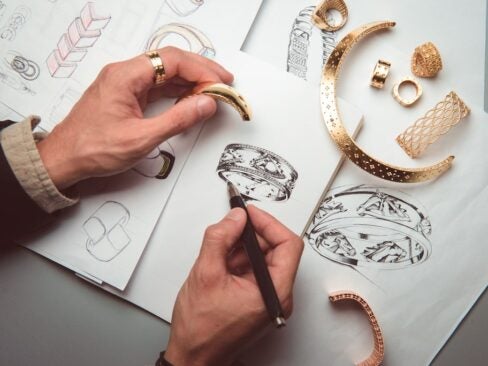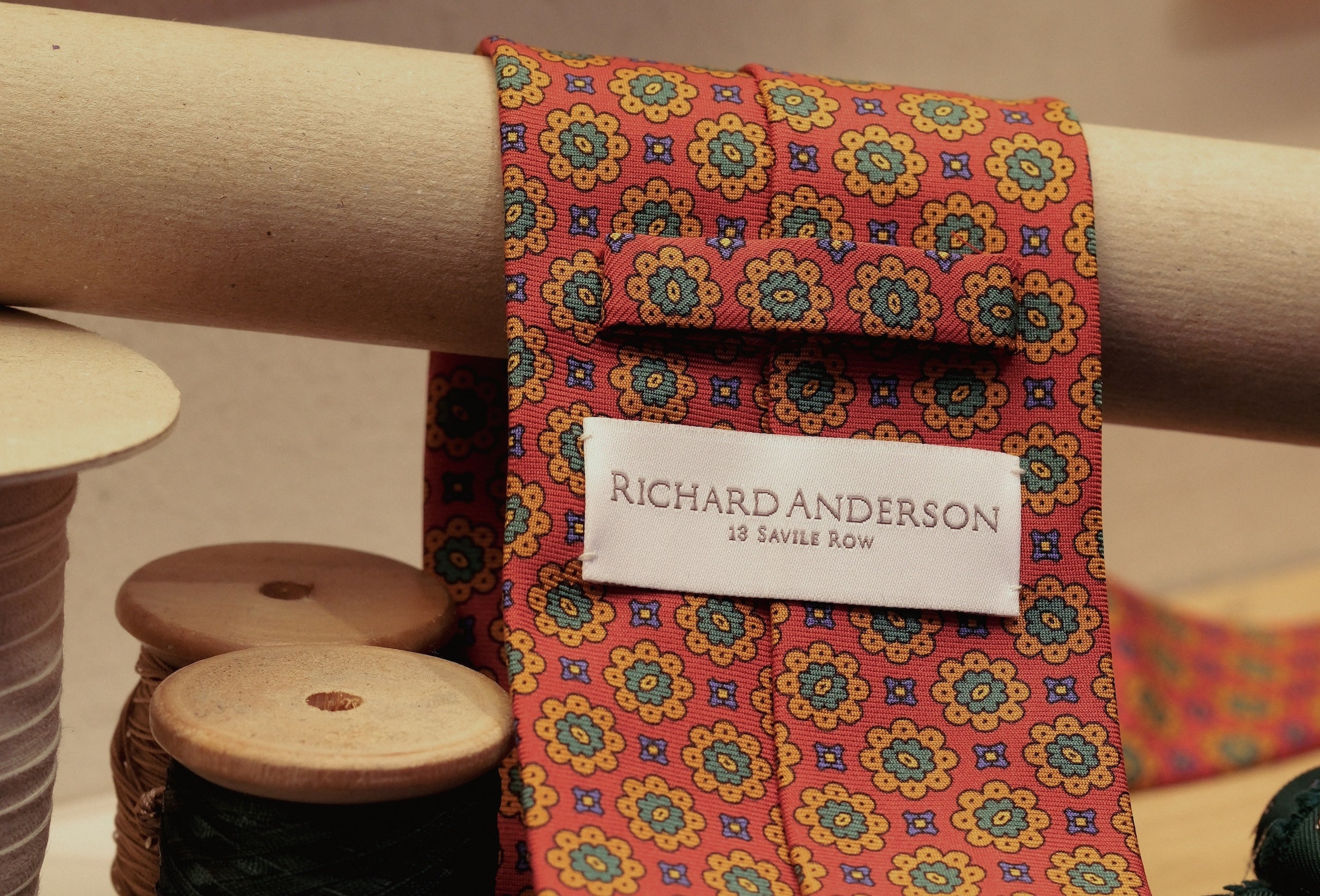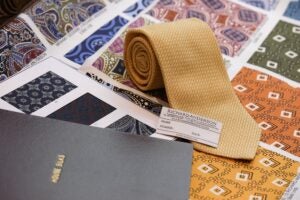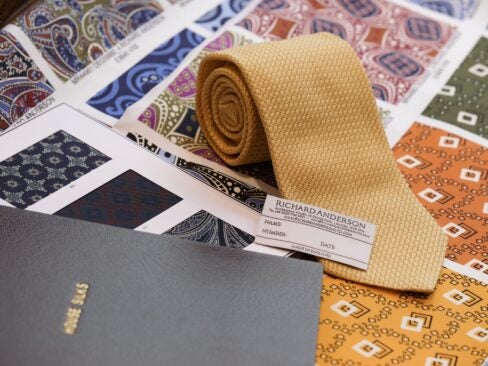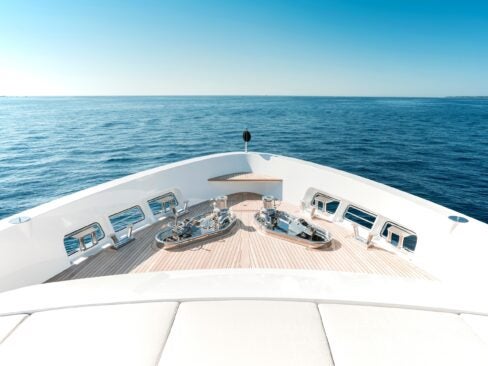It’s no secret that the humble tie is in the midst of a comeback.
Shunned from many offices following the arrival of business casual, there was a chance the increase in working from home after the pandemic could have ended it for good. And yet it didn’t. In fact, the situation is quite the opposite; neckwear is once again on the rise, so much so that bespoke tailors like Richard Anderson are extending their offering and entering the fray.
Much like the world of suiting, ties come in a wide range of different shapes, sizes, colors and price points. If you so desired, you could pop into your local discount clothing store and leave with a perfectly serviceable tie for less than $10. But like the budget-friendly suit the shop is also selling, the tie you’d leave with would be incomparable to what is possible at a bespoke service like the one recently introduced at Richard Anderson.
London’s Savile Row has built its hard-earned reputation over the years by delivering the best of the best, a level of quality and craftsmanship that doesn’t exist anywhere else. There’s a reason British bespoke tailors find themselves hopping over the Atlantic to deliver trunk shows stateside so regularly: the demand for British suiting remains high.

To learn a little more about Richard Anderson’s bespoke tie offering, I recently headed over to Savile Row and spoke with Beth Bisney, product developer at Richard Anderson, who’s taken the lead on the new bespoke tie service.
“In theory, a bespoke Richard Anderson tie has always been possible,” said Bisney. “There would have just been a few hurdles to overcome, how much is it going to cost, how long is it going to take?”
With this new service, Richard Anderson has streamlined the process. A customer can visit the store and select a pattern from the 12 house silks — these can be turned around the fastest. If they are looking for more choice, they head to ‘The Blanket’, a large rolled-up piece of fabric that displays an impressive range of options, at an elevated price. “If they are looking for something more unusual, like tweed, we would then look to our suiting fabrics,” said Bisney. “Once they have chosen the silk, we discuss the tie’s width and length.”
A tie’s sizing boils down to numerous factors; it’s generally advised that a tie’s width should be similar to that of the lapel. A skinny tie will get lost with big lapels, while a wide tie will look clownlike when paired with a skinny lapel.
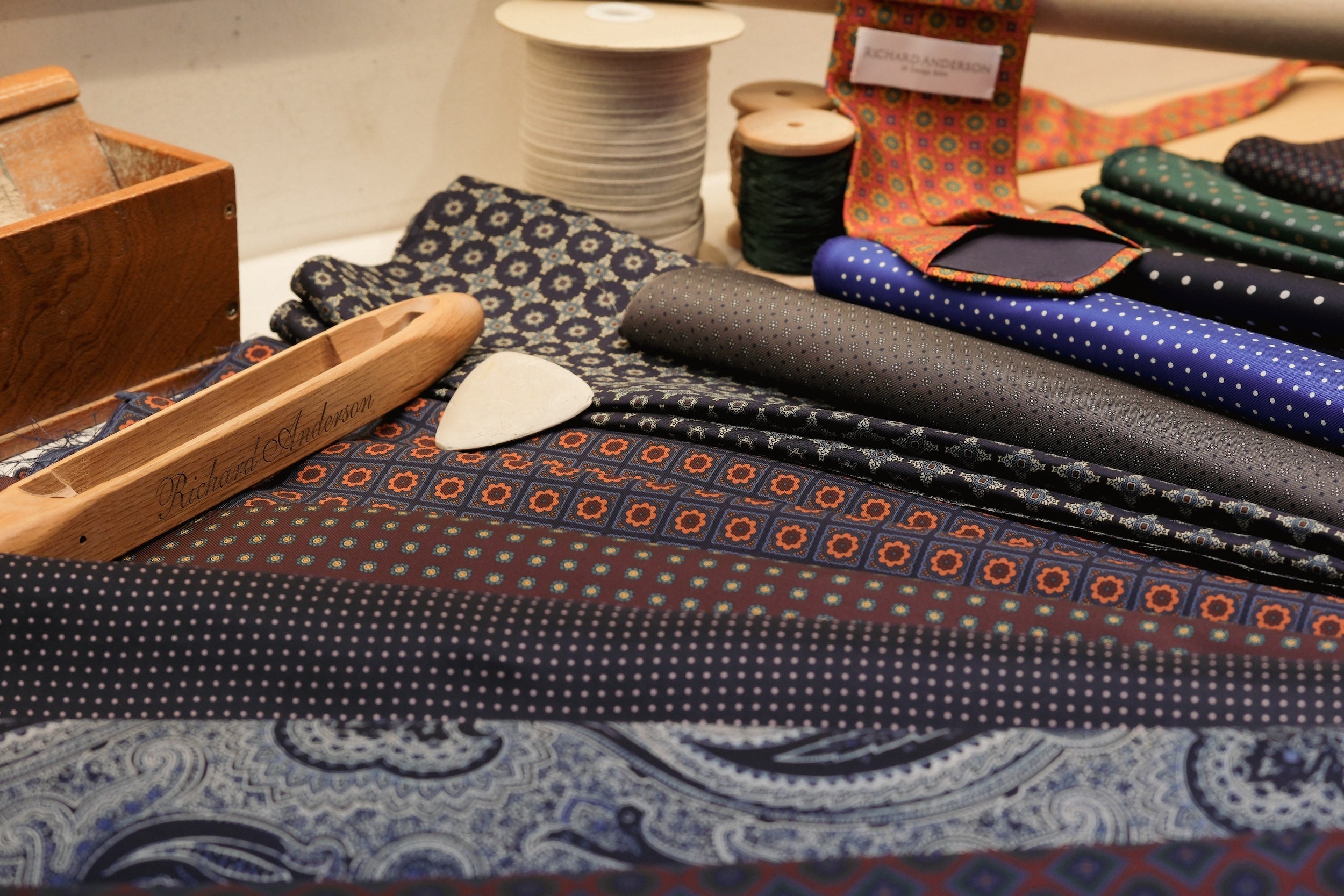
The tie knot the wearer prefers is also important when deciding length and width. “Richard loves a double Windsor, but that style of knot uses a lot of tie length. If a customer prefers a simpler knot, we will take some length off the tie to stop it being too long once it’s tied.”
Once these details are decided upon, the cloth is manufactured at Richard Anderson’s material specialists in Macclesfield in the north of England, before being sent to Kent in England’s south east. Here, tie makers draft a personalized pattern, cut the silk and construct the tie by hand in the three-fold fashion.
“To finish, the ties are sent to the store and we finish them with our bespoke label,” said Bisney. “Customers get their name or the name of someone they are gifting it to, perhaps a special date, and this finishing touch, like the rest of the tie, is all done by hand.”
It’s these finishing touches that set the world of bespoke apart and help to transform a tie from a simple strip of fabric into something much more.
Richard Anderson bespoke ties are now available starting at £198 ($269) for the house silks. Customers can begin the process in-store, over the phone, or at a Richard Anderson trunk show.


